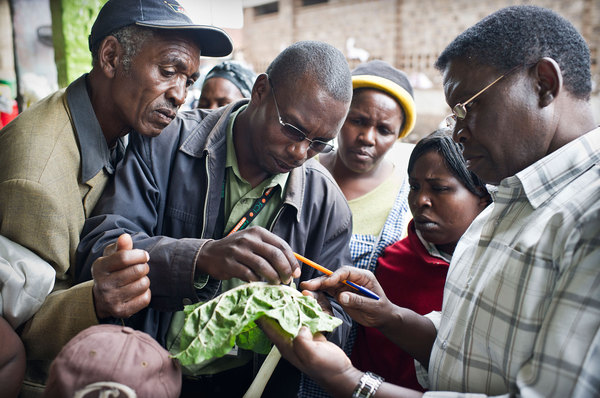How climate smart agriculture can lead to ‘triple wins’ for farmers threatened by climate change
Global food consumption is predicted to increase by 51% by 2050. This is a profound challenge for our agrifood systems, which will only be made harder by the increased pressures of climate change on food security. In addition, agriculture is not just impacted by climate change; it is also a significant source of the greenhouse…
Conservation farming: can it offset fall armyworm’s impact?
Conservation farming has been promoted in sub-Saharan Africa as a way to potentially improve yields while conserving the environment. Farmer livelihoods are increasingly threatened by climate change, declining soil fertility, land degradation, pests, and diseases. Finding sustainable farming methods that address these challenges is key to feeding a growing population.
Plantwise innovations highlighted in UN Climate Change report
CABI’s work in supporting agricultural decision-making for smallholder farmers using innovative digital tools has been featured in a new report by the United Nations Framework Convention on Climate Change (UNFCCC), the United Nations body coordinating climate action around the world.
Indian NGO supports farmers by using greenhouse agriculture
In the south Indian region of Hyderabad, a non-profit called Kheyti has developed an affordable solution to income stability and climate-resilient crop production for smallholder farmers and SMEs (small and medium enterprises) – greenhouses. The organisation founders spent countless hours meeting with Indian farmers to understand the range of issues threatening farming communities. “When we…
‘Green Super Rice’: Improving smallholder incomes and reducing hunger across Asia and Africa
Scientists and crop breeders in China have produced new varieties of rice called ‘Green Super Rice’ (GSR) to help tackle the global burden of increasing populations, food production and farmer incomes with its 20% increase in yield across varying challenging growing conditions.
Women farmers in Ekxang Village equipped with pest-smart practices against pest and disease outbreaks
by Sathis Sri Thanarajoo. Reblogged from CCAFS: CGIAR News blog. The Pest Smart program aims to enable farmers, particularly women and marginalized groups, to become resilient against potential pests and diseases outbreaks due to climate change. The Pest Smart program promotes the adoption of climate-smart practices that manage pests and diseases, and empowers women to be actively…
Developing pest-smart farmers in Cambodia
In Rohal Suong Climate-Smart Village, adoption of ecological engineering practices has improved farmers’ ability to prevent pests and diseases outbreaks while reducing pesticides use. Every year, a great portion of Cambodian farmers’ income is at risk because of possible pests and diseases (P&D) outbreak. Aside from the inadequate knowledge of farmers, climate change aggravates the…
9 ways to get climate-smart agriculture to more people
This is the final post as part of our Climate Smart Agriculture Week (20 – 24 November 2017) Understanding which agricultural practices work best, and where, to halt the impacts of climate change is one thing. But making sure those practices are adopted by communities – farmers, decision and policy makers – is another thing.








